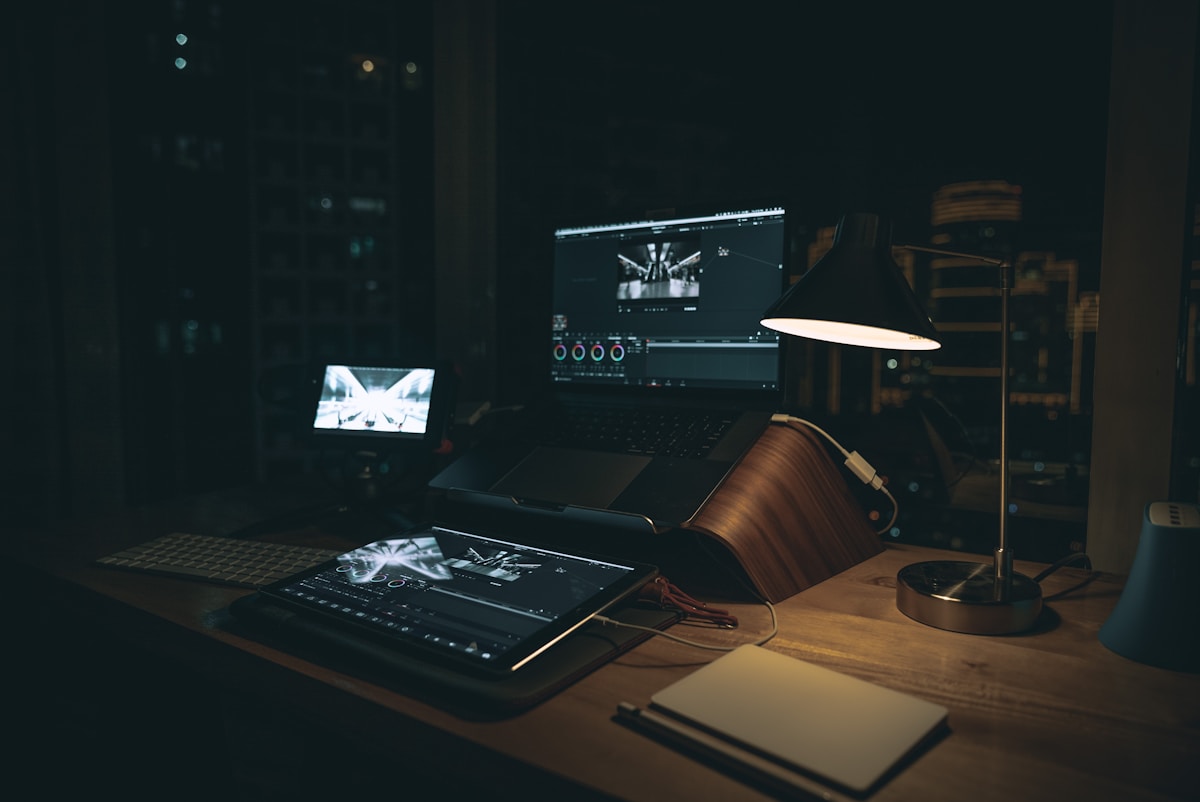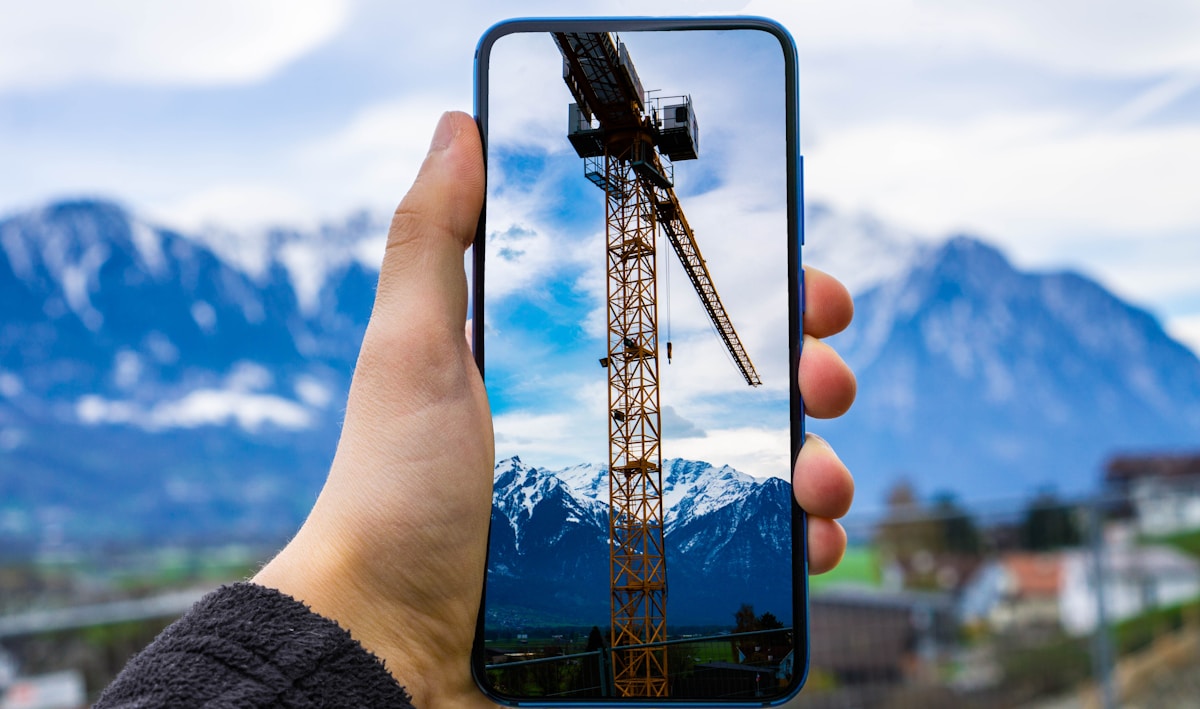Crucial Considerations: Choosing The Right Website Image Size
Crucial Considerations: Choosing The Right Website Image Size

Choosing the right website image size is crucial for optimizing user experience and overall website performance. The impact of image size on user experience cannot be overstated, as it directly affects loading times, responsiveness, and visual appeal. In this article, we will explore the importance of selecting the appropriate image sizes for websites and how Strikingly can assist in optimizing these sizes.
The Importance Of Choosing The Right Website Image Size
Selecting the right website image size is essential for several reasons.
Firstly, it ensures that images are displayed properly without appearing pixelated or stretched, maintaining a professional and visually appealing website.
Secondly, it significantly impacts loading times. Large image files can slow page load speeds, leading to a frustrating user experience and potentially causing visitors to leave the site.
Impact Of Web Image Size On User Experience
The impact of image size on user experience cannot be underestimated. Slow-loading images can lead to high bounce rates and decreased engagement with your website content. On the other hand, appropriately sized images that load quickly enhance user satisfaction and encourage them to stay longer on your site.
How Strikingly Can Help Optimize Website Image Size
Strikingly is a powerful tool that can significantly contribute to optimizing website image sizes. Here's how:
User-Friendly Interface & Templates - Strikingly offers a user-friendly interface that makes optimizing images easy for even those without coding knowledge. The website templates designed for different professions and niches help you avoid website image size mistakes.

Image taken from Strikingly
Resize and Optimize Without Quality Loss - The platform allows you to resize and optimize images without compromising quality. Ensuring your website maintains a professional and visually appealing look is crucial.

Image taken from Strikingly
Templates for Different Sections - The platform offers templates designed for different sections of your website, such as hero banners and product galleries. Following these templates ensures that images are appropriately sized for each specific area.

Image taken from Strikingly
Responsive Design- The platform emphasizes responsive design, ensuring your images look great across different devices. It is essential for providing a seamless and consistent user experience.
Automated Compression- Compression is crucial for reducing file sizes when optimizing images for the web. Strikingly may have automated compression features that streamline this process, helping to enhance overall website performance.
Mobile Optimization- As more users access websites through smartphones, Strikingly likely emphasizes mobile optimization, ensuring that your images are well-optimized for smaller screens.

Image taken from Strikingly
Integration with Overall Website Design - Strikingly's image optimization features are likely integrated seamlessly with the overall website design, ensuring your entire site's cohesive and polished look.
Leveraging Strikingly's features can streamline the process of optimizing website image sizes, resulting in a visually appealing and high-performing website.
Now, let's explore what website image size entails and the factors to consider when choosing the appropriate sizes.
Understanding Website Image Size

What Is Website Image Size?
Website image size refers to the physical dimensions of an image measured in pixels (width x height) and the file size measured in kilobytes (KB) or megabytes (MB). The dimensions determine how large or small the image appears on a webpage, while the file size affects how quickly the image loads.
Factors To Consider When Choosing Image Size
When choosing the right image size for your website, there are several factors to consider-
1. Purpose- Consider the purpose of the image and what it aims to convey. Is it meant to be a focal point or a supporting element? Understanding its purpose will help determine the appropriate size.
2. Content layout- Consider where you plan to place the image within your webpage. Different sections may require different sizes to fit seamlessly.
3. Screen resolution- Consider the screen resolutions of your target audience's devices. Higher-resolution screens may require larger images for optimal display quality.
4. Responsive design- With mobile browsing becoming increasingly popular, ensure that your images are responsive and can adapt to different screen sizes without losing quality or causing distortion.
5. Loading speed- Large file sizes can significantly slow down website loading times, negatively impacting user experience and search engine rankings. Optimize images for fast loading without compromising quality.
Impact Of Image Size On Website Performance
1. Loading speed- Larger images take longer, leading to slower page load times and potentially higher bounce rates as impatient users navigate away from slow-loading websites.
2. Bandwidth usage- Large image files consume more bandwidth, especially for users on limited data plans or slower internet connections. It can result in increased costs for both users and website owners.
3. Server load- Heavy image files strain web servers, affecting the website's overall performance. It can lead to server crashes or downtime, negatively impacting user experience.
4. SEO optimization- Search engines consider website speed a ranking factor. Slow-loading websites may be penalized in search engine rankings, resulting in lower visibility and reduced organic traffic.
Optimizing image sizes ensures fast loading times, reduces bandwidth usage, and improves website performance.
Website Image Size Guidelines

Choosing the right image size for your website is crucial to enhance user experience and optimize website performance. Here are some guidelines to help you make informed decisions-
Determining The Purpose Of The Image
Before selecting an image size, it is important to understand the purpose of the image on your website. Is it a hero banner, a product image, or a background image? Each type of image serves a different purpose and requires specific dimensions.
For example, hero banners often span the entire webpage width and require larger dimensions to create an impactful visual. On the other hand, product images may need smaller dimensions to fit neatly within a gallery or grid layout.
Considering The Placement Of The Image
The placement of an image on your website also plays a significant role in determining its size. If an image is intended to be placed in a prominent position, such as above the fold or as a focal point, it might require larger dimensions to grab users' attention.
However, smaller dimensions might be more appropriate if an image is meant to be used as a thumbnail or within a content section. Consider how the image will interact with surrounding elements and ensure it does not overpower or distort other content on your webpage.
Ensuring Responsiveness Across Devices
In today's mobile-dominated world, ensuring your website images are responsive across different devices is crucial for providing a seamless user experience. Responsive design allows images to adapt and resize based on screen size without compromising quality or loading speed.
To achieve responsiveness, consider using CSS media queries or responsive design frameworks that automatically adjust image sizes based on device specifications. It will ensure that your images look great when accessed from desktops, tablets, or smartphones.
Following these guidelines, you can select the right image size that aligns with your website's purpose, placement, and responsiveness requirements. Balancing visual impact and optimal performance is key to creating a positive user experience.
Optimizing Images For Web

When optimizing images for the web, several important factors must be considered. The following section will cover three key aspects of image optimization- compressing images for faster loading, choosing the right file format, and utilizing image optimization tools.
Compressing Images For Faster Loading
Compressing images is crucial for improving website performance and user experience. Large image file sizes can significantly slow page load times, leading to higher bounce and lower conversion rates. Reducing the file size of images without compromising quality can ensure that your website loads quickly and efficiently.
There are several ways to compress images for the web. One popular method is using image compression software or online tools that automatically optimize the size of your images while preserving their visual integrity. These tools use advanced algorithms to remove unnecessary data from the image file, resulting in smaller file sizes without noticeable loss in quality.
Choosing the Right File Format
Choosing the right file format is another crucial aspect of optimizing images for the web. Different file formats have different characteristics that can impact image quality and file size.
JPEG (Joint Photographic Experts Group) is often the best choice for photographs or complex graphics with many colors. JPEG files use a lossy compression algorithm that can significantly reduce file size while maintaining satisfactory image quality. However, balancing compression and visual integrity is important to avoid noticeable artifacts or blurriness.
For simple graphics or illustrations with fewer colors and sharp edges, PNG (Portable Network Graphics) is a suitable option. PNG files use lossless compression, which means they retain all the original data without sacrificing quality. However, PNG files tend to have larger sizes compared to JPEGs.
In some cases, consider using SVG (Scalable Vector Graphics) format for logos or icons that require scalability across different devices and screen resolutions.
Utilizing Image Optimization Tools
You can use various image optimization tools available online to streamline the process of optimizing images for the web. These tools automate the compression and resizing process, making optimizing multiple images at once easier.
Some popular image optimization tools include-
1. TinyPNG - The tool uses smart lossy compression techniques to reduce file sizes without compromising quality.
2. Kraken.io - Kraken.io offers both lossy and lossless compression options and advanced features like image resizing and optimization for different devices.
3. Compressor.io - Compressor.io supports various file formats and provides a real-time preview of compressed images before downloading.
Utilizing these tools simplifies image optimization and ensures your website's images are optimized for optimal performance and user experience.
Best Practices For Image Sizes In Different Websites

When optimizing image sizes for different website sections, there are specific best practices to consider. Following these guidelines ensures your images are visually appealing, load quickly, and enhance the user experience.
Hero Banners And Sliders
To optimize hero banners and sliders-
1. Choose the right dimensions- The ideal size for hero banners is typically around 1920 pixels wide by 1080 pixels tall. It ensures that the image fills the entire width of most desktop screens without losing quality.
2. Compress the image- Use an image compression tool to reduce file size without sacrificing quality. It helps improve loading times, especially on mobile devices.
3. Consider responsive design- Ensure your hero banner or slider is responsive across different devices using CSS media queries or a responsive website builder like Strikingly. It allows the image to adapt to various screen sizes while maintaining its impact.
Product Images And Galleries
Product images are vital in e-commerce websites as they directly influence purchasing decisions. It's essential to showcase your products appealingly while ensuring fast loading times.
To optimize product images and galleries-
1. Use high-quality images- Ensure your product images are clear, sharp, and visually appealing to entice potential customers.
2. Resize images appropriately- Adjust each product image's dimensions according to its display area on the website. It prevents the image from appearing stretched or distorted.
3. Optimize file formats- For product images, use JPEG or PNG formats, depending on the complexity of the image. JPEG is suitable for photographs, while PNG is ideal for images with transparent backgrounds or simple graphics.
4. Implement lazy loading- Lazy loading is a technique that defers the loading of images until they are about to appear in the user's viewport. It helps improve page load times, especially when multiple product images are in a gallery.
Background Images And Text Overlays
Background images and text overlays enhance website aesthetics and provide visual interest. These elements can be found in sections such as headers, testimonials, or call-to-action banners.
To optimize background images and text overlays-
1. Choose appropriate dimensions- Consider the aspect ratio of your background image to ensure it fits well within its designated section without being cropped or distorted.
2. Maintain text legibility- Ensure that any text overlaid on the background image remains easily readable by choosing contrasting colors and appropriate font sizes.
3. Compress images effectively- Use image compression techniques to reduce file size without compromising quality. It helps maintain fast loading times while preserving visual appeal.
4. Consider parallax scrolling- Parallax scrolling creates a visually engaging effect where background images move at a different speed than foreground elements as users scroll down the page. Use this technique sparingly to avoid performance issues.
Following these best practices for different website sections can optimize your image sizes effectively while enhancing the overall user experience. Remember to choose the right dimensions, compress images appropriately, and ensure responsiveness across devices.
Common Mistakes To Avoid In Image Sizing

Several common mistakes regarding website image size should be avoided to ensure optimal user experience and website performance.
Stretching And Distorting Images
One of the most common mistakes in image sizing is stretching or distorting images to fit a specific space on a website. It can result in images appearing pixelated or distorted, which can negatively impact the website's overall aesthetics. It is important to maintain the aspect ratio of an image when resizing it, ensuring that it retains its original proportions.
Using High-Resolution Images Unnecessarily
Using high-resolution images unnecessarily can significantly slow down the loading time of a website. While high-quality images are important for visual appeal, they should be optimized for web use to ensure faster loading speeds. It is recommended to use image compression techniques or tools to reduce file sizes without compromising too much on quality.
Neglecting Mobile Optimization
With increasing users accessing websites through mobile devices, paying attention to mobile optimization can be costly. Images not properly optimized for mobile devices may load incorrectly or take longer, resulting in a poor user experience. It is crucial to consider responsive design principles and ensure that images are appropriately sized for different screen sizes.
Avoiding these common mistakes in image sizing can enhance user experience and improve the overall performance of your website. Remember to maintain the aspect ratio of images, optimize file sizes without sacrificing quality, and prioritize mobile optimization for a seamless browsing experience.
Conclusion
Choosing the right image size is key for a great user experience. Strikingly makes it easy to optimize images on your site without compromising quality. Follow best practices, consider image purpose and placement, and ensure device responsiveness. Compress images wisely, use appropriate file formats, and follow specific guidelines for different website sections. Avoid common mistakes and prioritize mobile optimization. Strikingly's user-friendly platform offers essential tools and guidance for effective image optimization, resulting in a visually appealing and high-performing website. Start enhancing your site today for improved loading speed and visitor engagement.
